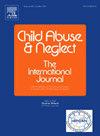儿童虐待报告和寄养的纵向联系的国家记录的好处。
IF 3.4
2区 心理学
Q1 FAMILY STUDIES
引用次数: 0
摘要
背景:报告和安置综合数据系统(RAPIDS)将两个美国国家数据系统- ncands的儿童虐待报告(CMR)记录和AFCARS的寄养(FC)记录-整合到一个跨越2006-2021年的单一纵向数据集中。这种整合通过将这些以前独立的系统的年度文件联系起来,使全面的儿童虐待分析成为可能。目的:探讨RAPIDS数据在了解CMR预后方面的益处。参与者和环境:2018年0-10岁cmr儿童(N = 2,371,119)。方法:使用逻辑回归,我们对五个结果进行了建模:两个来自2018年指数报告的当前结果(证实和寄养条目)和三个两年内的未来结果(重新报告、证实的重新报告和寄养条目)。对于每个结果,我们比较了仅使用没有RAPIDS变量的指数报告数据的模型和包含RAPIDS变量的模型,这些变量捕获了报告、位置和兄弟姐妹之间的纵向模式。结果:RAPIDS数据改善了所有结果的模型性能,对未来的结果有更大的改善。总体模型拟合(Tjur's R2)增加了证实(11.75%→12.53%)、FC进入(4.17%→6.38%)、报告(0.94%→4.99%)、证实的报告(1.04%→3.31%)和未来FC进入(0.85%→2.51%)。预测性能也得到改善:在80%的敏感性下,特异性增加了证实(54%→56%)、FC进入(52%→58%)、报告(27%→36%)、证实报告(33%→42%)和未来FC进入(37%→49%)。此外,RAPIDS数据能够分析更广泛的预测因素及其与结果的关联,充分利用国家纵向CMR和FC记录。结论:RAPIDS数据增强了解释能力和预测准确性,能够在全国范围内对CMR和FC记录进行纵向分析,并为风险和保护因素提供有价值的见解。本文章由计算机程序翻译,如有差异,请以英文原文为准。
Benefits of longitudinally linked national records of child maltreatment report and foster care
Background
The Report and Placement Integrated Data System (RAPIDS) integrates two U.S. national data systems—NCANDS' child maltreatment report (CMR) records and AFCARS' foster care (FC) records—into a single longitudinal dataset spanning 2006–2021. This integration enables comprehensive child maltreatment analysis by linking the annual files from these previously separate systems.
Objective
To explore benefits of RAPIDS data in understanding CMR outcomes.
Participants and setting
Children aged 0–10 years with CMRs in 2018 (N = 2,371,119).
Methods
Using logistic regression, we modeled five outcomes: two current outcomes from 2018 index reports (substantiation and foster care entry) and three future outcomes within two years (re-report, substantiated re-report, and foster are entry). For each outcome, we compared models using only index report data without RAPIDS variables against models incorporating RAPIDS-enabled variables that capture longitudinal patterns across reports, placements, and siblings.
Results
RAPIDS data improved model performance across all outcomes, with greater gains for future outcomes. Overall model fit (Tjur's R2) increased for substantiation (11.75 % → 12.53 %), FC entry (4.17 % → 6.38 %), rereport (0.94 % → 4.99 %), substantiated rereport (1.04 % → 3.31 %), and future FC entry (0.85 % → 2.51 %). Predictive performance also improved: at 80 % sensitivity, specificity increased for substantiation (54 % → 56 %), FC entry (52 % → 58 %), rereport (27 % → 36 %), substantiated rereport (33 % → 42 %), and future FC entry (37 % → 49 %). Additionally, RAPIDS data enabled analysis of a wider array of predictors and their associations with outcomes, fully utilizing national longitudinal CMR and FC records.
Conclusions
RAPIDS data enhance explanatory power and predictive accuracy, enabling nationwide, longitudinal analysis of CMR and FC records and offering valuable insights into risk and protective factors.
求助全文
通过发布文献求助,成功后即可免费获取论文全文。
去求助
来源期刊

Child Abuse & Neglect
Multiple-
CiteScore
7.40
自引率
10.40%
发文量
397
期刊介绍:
Official Publication of the International Society for Prevention of Child Abuse and Neglect. Child Abuse & Neglect The International Journal, provides an international, multidisciplinary forum on all aspects of child abuse and neglect, with special emphasis on prevention and treatment; the scope extends further to all those aspects of life which either favor or hinder child development. While contributions will primarily be from the fields of psychology, psychiatry, social work, medicine, nursing, law enforcement, legislature, education, and anthropology, the Journal encourages the concerned lay individual and child-oriented advocate organizations to contribute.
 求助内容:
求助内容: 应助结果提醒方式:
应助结果提醒方式:


